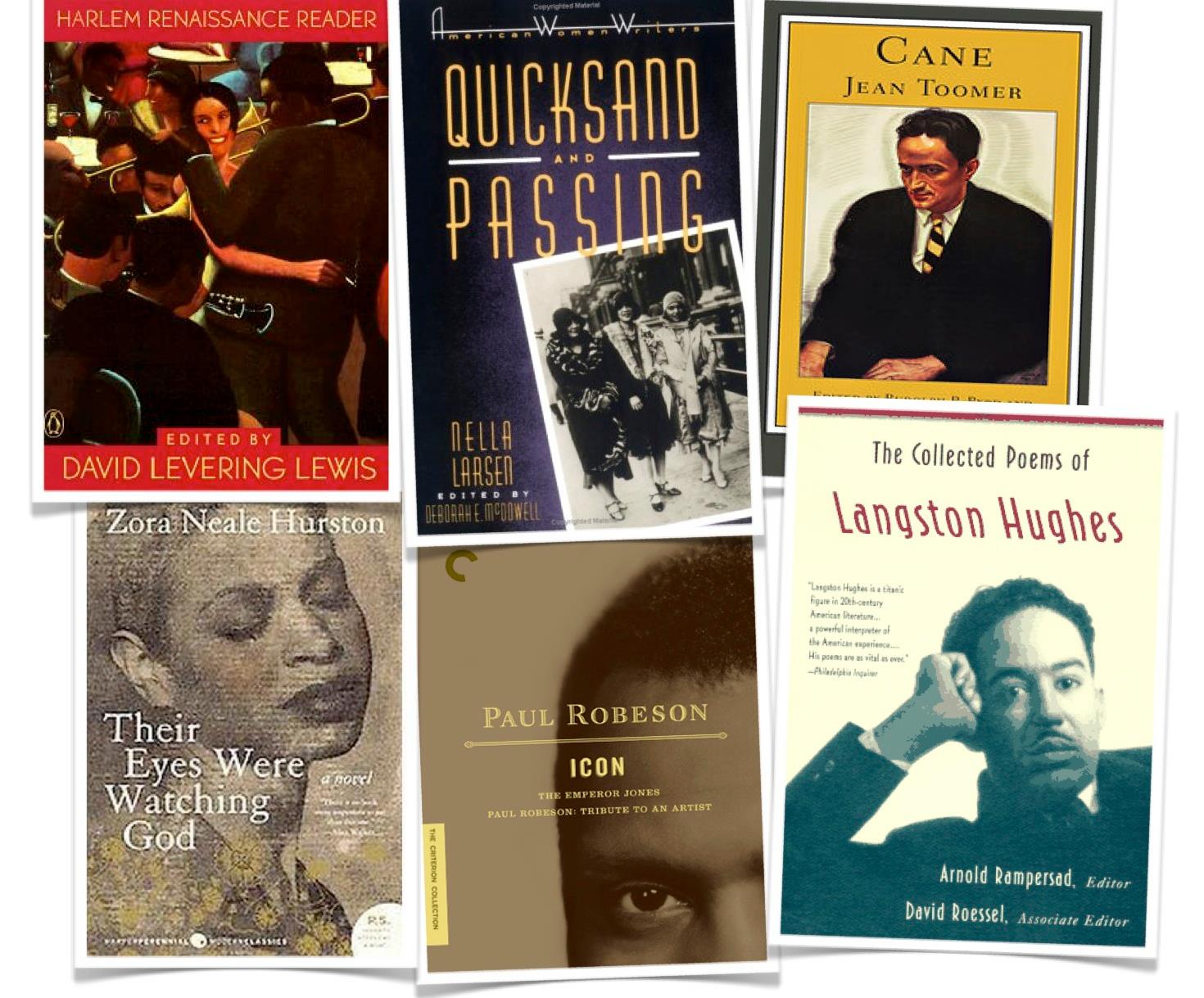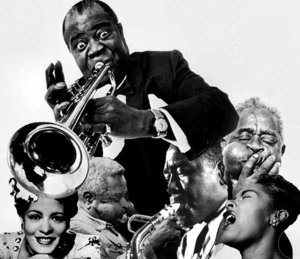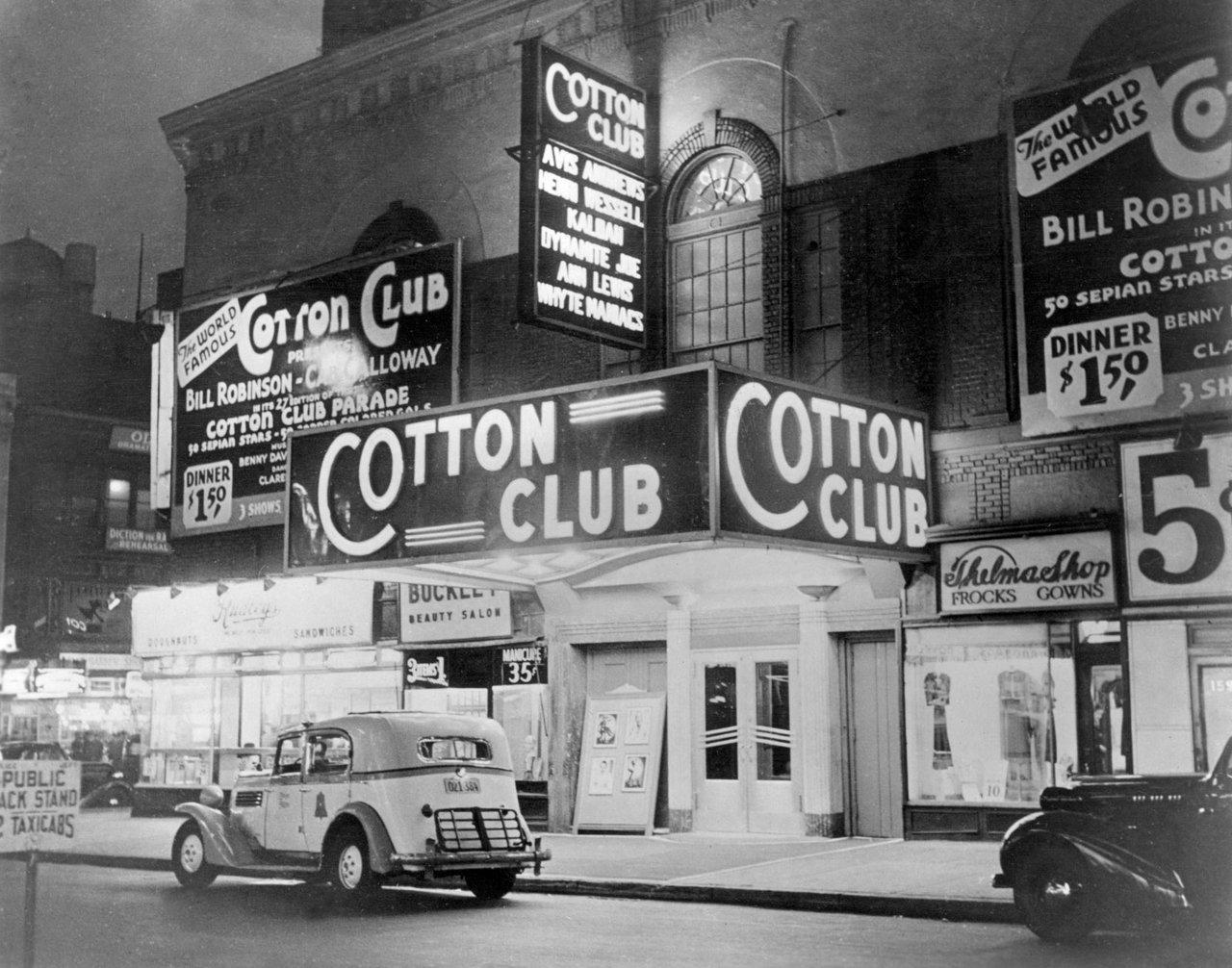
The Harlem Renaissance was a period during the 1920's
when African-American achievements in art, literature and music flourished. A period of great diversity and experimentation. The WW1 Great Migration saw the movement of thousands of African Americans from the farmlands in the south to the cities in the north in order to find new opportunities and build better lives. Many made their way to the New York city neighborhood of Harlem in Manhattan, New York City which became the home of the movement.

The Harlem Renaissance coincided with the Jazz Age, a time of innovative ideas and modernism with rapid cultural and social changes. Harlem became a cultural center buzzing with new ideas and attracting African American scholars, writers, poets, artists, actors, musicians and singers. The Cotton Club was the most famous Harlem night spot where musicians such as Louis Armstrong and Duke Ellington played Dixie, the blues and developed the improvisational style of music called Jazz.

The Harlem Renaissance was important because it inspired an explosion of cultural pride and was perceived as a new beginning for African Americans. Black Americans were inspired to create works rooted in their own culture instead of imitating the styles of white Americans. African Americans were encouraged to celebrate their heritage.

The Harlem Renaissance was an era in U.S. History so full of creativity that it was short lived due to the Great Depression in 1929 and the beginnings of World War II.
Read this website and answer the questions on your
Jazz Age and the Harlem Renaissance Worksheet
I'm not sure if I'm supposed to comment but I will anyway. I thought it was really interesting that even though America went through the Harlem renaissance, there was still racism. That stinks!
ReplyDeleteI felt that the Lost Generation was missing out of the good parts of the 1920s.
ReplyDeleteHow ironic that the popular black musicians could only play for whites in the clubs and the common blacks could not enjoy the music as well.
ReplyDeleteSo was F. Scott Fiztgerald part of The Lost Generation or just writing about it?
ReplyDeleteThis comment has been removed by the author.
DeletePart of it.
DeleteIn literature, the "Lost Generation" refers to a group of writers and poets who were men and women of this period. All were American, but several members emigrated to Europe. The most famous members were Gertrude Stein, Ernest Hemingway, F. Scott Fitzgerald, and T. S. Eliot.
https://writersinspire.org/content/lost-generation
I thought it was cool that the African-Americans migrated up north and had a LITTLE BIT of the stress relieved by making their own art and music and just embracing their heritage. :)
ReplyDeleteIt's amazing how television effected the world back then, yet it effects the world differently today.
ReplyDeleteI learned that a lot of times Jazz was improvised at night clubs and such. I didn't know that a lot of it wasn't preplanned! (Don't know much about Jazz, haha.)
ReplyDeleteI like it how this period could be seen as the blacks realizing that they are human beings, to be loved and respected. The racism was still there, but the blacks decided that white peoples' stupidity wasn't worth their time, that they would rather be playing music and writing poems. They finally realized their potential and what they could be, without white people draped all over their backs. As Kid President says, "We can cry about it... Or we can dance about it!" I think the blacks chose dancing.
ReplyDelete